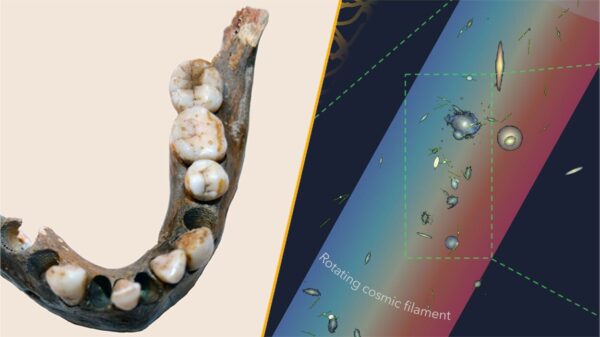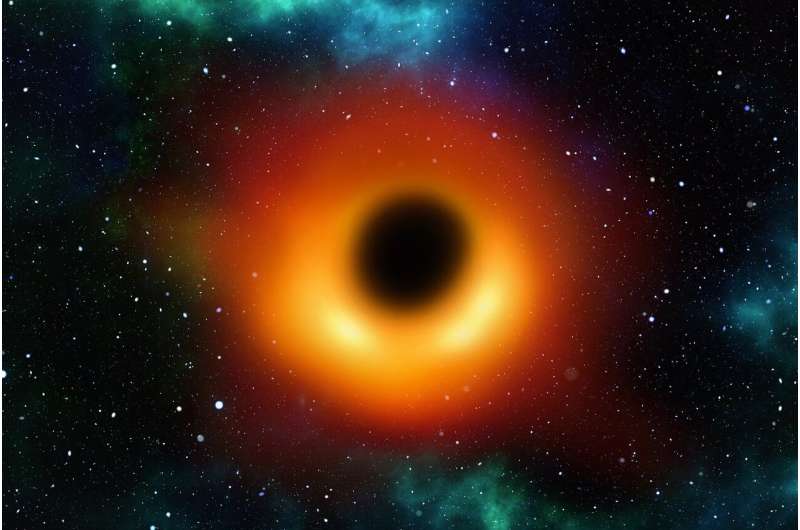Recent research has provided compelling evidence that black hole mergers could result in detectable gravitational-wave tails, phenomena that extend beyond the initial gravitational wave emissions. A collaborative team from the Niels Bohr Institute, the University of Lisbon, and other global institutions conducted simulations based on Einstein’s general relativity to explore this possibility. Their findings, published on November 13, 2025, in the journal Physical Review Letters, suggest that these late-time gravitational-wave tails may have a greater amplitude than previously anticipated, potentially observable in future experiments.
During a black hole merger, the resulting gravitational waves are typically characterized by a distinct initial phase known as “ringdown.” This phase occurs as the newly formed black hole stabilizes, emitting a series of well-defined frequencies. According to Marina De Amicis, the paper’s first author, “This phase is routinely observed in real gravitational-wave data and is crucial for testing general relativity at small scales. Our paper shows that the ringdown is not the end of the story.” Following the ringdown, the black hole does not return to its original state immediately; instead, it emits a subtle signal referred to as a ‘tail.’
The researchers aimed to investigate whether these gravitational-wave tails exist in the context of merging black holes and how they compare to earlier theoretical predictions. Previous studies had suggested the presence of such tails in simplified scenarios, but the new research delves into the complexities of real-world black hole mergers. “The goal was to understand the predictions of Einstein’s general relativity in all its complexity,” said De Amicis.
To achieve this, the team employed numerical relativity simulations, which solve equations derived from Einstein’s theory. They faced two significant challenges. First, gravitational-wave tails are typically weak and can be obscured by numerical noise. To mitigate this, the researchers focused on configurations that naturally amplify the tail, such as head-on collisions. The second challenge involved the limited spatial coverage of simulations, which can truncate the signal and create artifacts. By extending the spatial dimensions of their simulations, the team was able to accurately capture the tail signals within a timeframe relevant for observational studies.
The findings indicate that not all black hole mergers will produce the same gravitational wave tails. The researchers discovered that certain mergers could amplify these tails, leading to new predictive models of gravitational waves based on nonlinear effects. De Amicis emphasized the importance of their discovery: “Even more interestingly, this new signal carries imprints of gravity’s ability to interact with itself, a property known as nonlinearity.”
Investigating these nonlinear effects is crucial, as gravity is a relatively weak force and probing its intricate nature has proven challenging. The team’s results imply that these effects could be studied not only during the brief moments of a merger but also in the aftermath, allowing for a longer observation period of tail signals.
As they look to the future, the researchers plan to evaluate the conditions under which these tail signals can be detected by current and upcoming gravitational-wave observatories. They aim to ascertain what specific features of the universe can be uncovered through these observations. This pioneering work not only offers new insights into black holes but also enhances our understanding of the universe’s structure and the fundamental laws of physics.
The implications of this research extend far beyond academic interest, potentially reshaping how scientists approach the study of gravitational waves and black holes. The ongoing exploration of these cosmic phenomena promises to deepen our understanding of the universe’s most mysterious elements.






































































